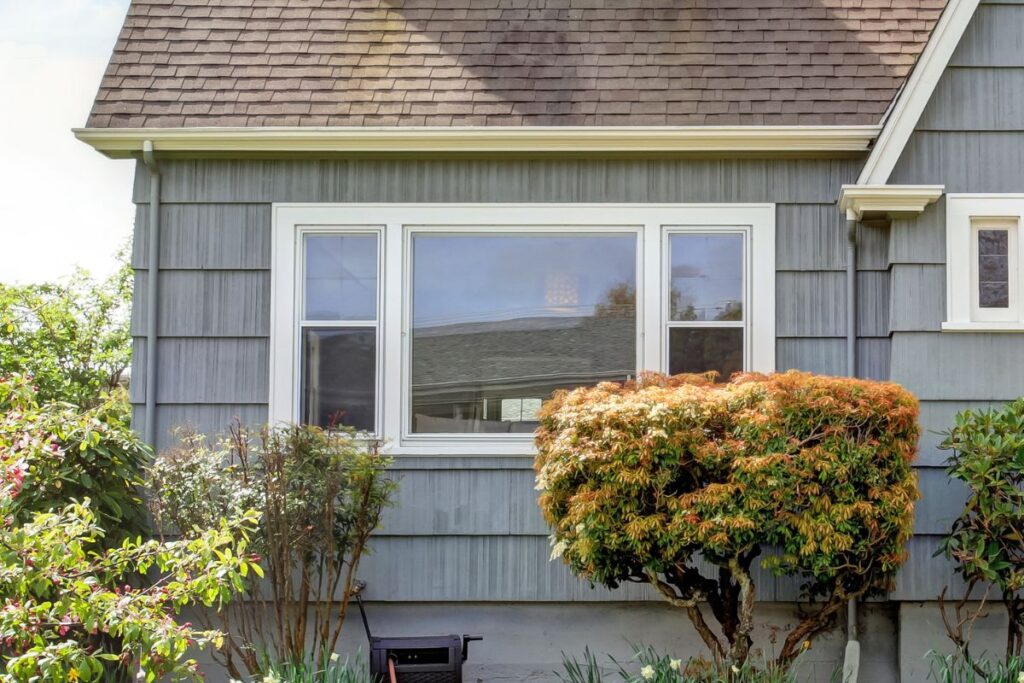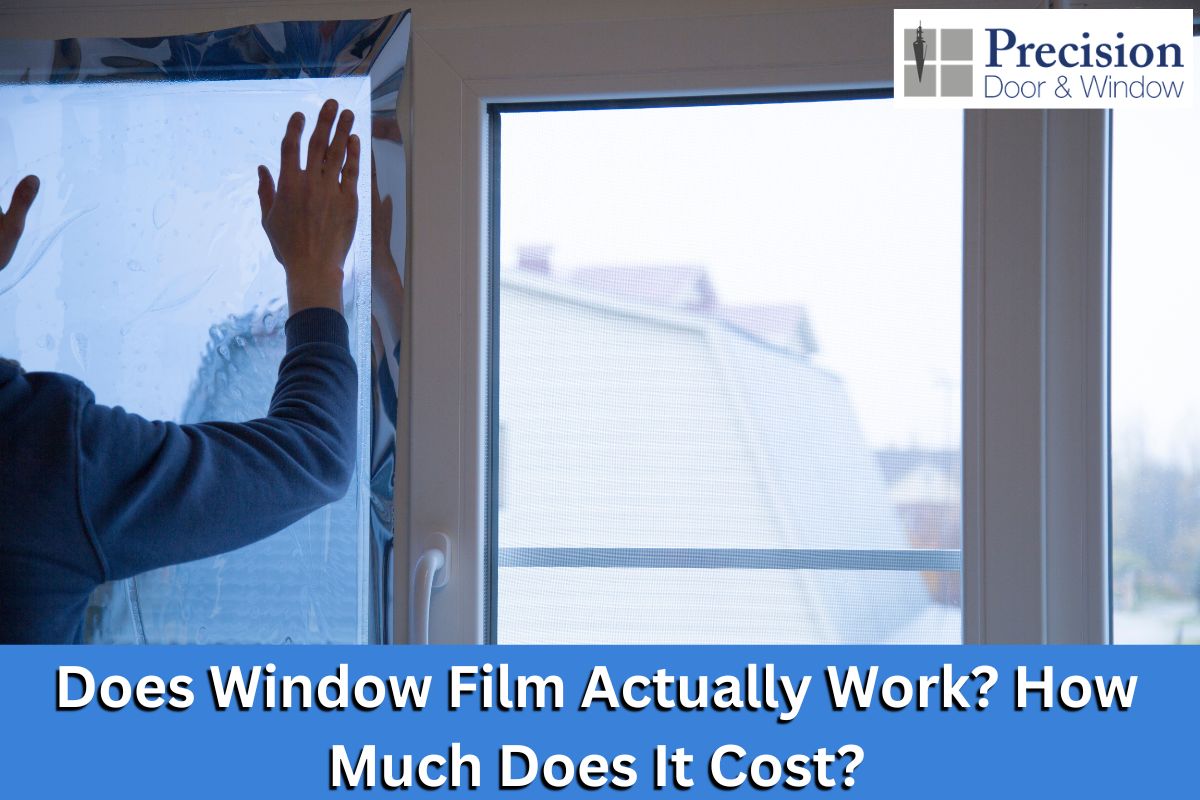Are you looking to enhance the privacy, comfort, or energy efficiency of your windows? There are many ways to enhance these lifestyle elements, and window film is one of them. In this blog post, we will explore whether window films are worth the cost and compare them to similar window accessories on the market.
Long-Term Benefits Of Window Film: Is It Worthy Of The Cost?
Typically, the installation cost of window film can range from as low as $5 per square foot to as high as $20 per square foot, depending on the type of film purchased. Despite the initial financial investment if you’re looking to cover all windows on your home, the long-term benefits are worth the cost. Here are some of them:

UV Protection
Window film blocks a significant portion of ultraviolet (UV) radiation from entering through windows, reducing the amount of fading that furniture and upholstery experience, along with minimizing the potential for skin damage caused by prolonged exposure to UV rays.
Heat Rejection
Certain types of film are designed to reflect or absorb solar heat, helping to keep interiors cooler during hot weather. This feature results in a more comfortable indoor environment and reduces reliance on air conditioning, leading to potential energy savings.
Glare Reduction
Window film can mitigate glare caused by direct sunlight, especially in rooms with large windows, or in areas where screens or televisions are present. By diffusing or filtering sunlight, window film enhances visibility and promotes a more enjoyable indoor experience.
Privacy Enhancement
Some types of window film offer privacy by creating a one-way mirror effect, allowing occupants to see outside while preventing outsiders from seeing into the home. This can be quite useful for homes or commercial spaces where privacy is a priority.
Safety and Security
Certain varieties of window film are engineered to enhance the shatter resistance of windows, holding glass fragments together in the event of breakage. This can minimize the risk of injuries from broken glass and deter intruders by increasing the difficulty of forced entry.
Different Kinds Of Window Film And Their Cost
Utilizing window film is similar to window tinting. It is a thin and transparent sheet that covers the interior glass of windows typically formed from layers of polyester film treated with special coatings and adhesive to achieve various desired technical and aesthetic outcomes.
Let’s look at how much some of these popular window film options cost.
Privacy Film
Privacy film serves as a practical solution for those seeking seclusion without compromising natural light. By obscuring the view from outside while permitting light inside the house, privacy film strikes an ideal balance between privacy and illumination.
Cost: Typically priced around $10 to $13 per square foot, privacy film offers an affordable means of enhancing levels of privacy within residential and commercial spaces.
Security Film
Security film is engineered to hold glass fragments together upon impact, enhancing safety and fortifying windows against potential threats. This resilient barrier discourages intruders, as it makes it more difficult to access the home.
Cost: With an average price ranging from $7 to $9 per square foot, security film provides a cost-effective solution for augmenting window security without compromising visibility.
Solar Film
Solar film stands out as a versatile option, offering plenty of benefits including energy efficiency, UV protection, and glare reduction. By minimizing heat gain during summer and heat loss during winter, solar film optimizes indoor comfort while preserving the view of the outside.
Cost: The cost of solar film varies based on type, ranging from approximately $8 to $14 per square foot. Despite the initial investment, the potential for long-term energy savings renders solar film a wise choice for environmentally-conscious homeowners.
Insulating Film
Designed to regulate heat transfer and improve energy efficiency, insulating film acts as a barrier against unwanted temperature fluctuations. By mitigating heat loss and gain, insulating film helps maintain consistent indoor temperatures year-round, reducing reliance on heating and cooling systems.
Cost: Ceramic window film, a popular variant of insulating film, typically ranges from $5 to $10 per square foot. This moderate investment yields substantial dividends in terms of energy savings and enhanced comfort levels.
In addition to the aforementioned types, anti-graffiti film is also an option that provides a protective shield against vandalism, allowing for easy removal of graffiti without necessitating a complete replacement of the windows.
Comparing Window Film To Blinds: Applications and Cost
Window film and blinds both serve as effective solutions for enhancing privacy, controlling light, and improving energy efficiency. However, they differ in their application, costs, and overall effectiveness.
Let’s make a comparative analysis of these two window treatments to find the best one for your needs:
Privacy and Light Control
Window Film: Privacy films offer a balance between privacy and natural light, obscuring the view of the interior from the outside while permitting light transmission. The spectrally selective film also provides precise control over heat, light, and UV radiation, optimizing thermal comfort without sacrificing visibility.
Blinds: Blinds offer adjustable slats or panels that can be tilted to control the amount of light and privacy desired. They come in various materials such as wood, aluminum, or fabric, offering different levels of light filtering and privacy.
Energy Efficiency
Window Film: Solar and insulating films help regulate heat transfer by covering the entire surface of the window, reducing heat gain in summer and heat loss in winter. This can help you save money on your energy bills by minimizing reliance on heating and cooling systems.
Blinds: Blinds don’t stick to the window, and they may not offer the same level of energy efficiency as specialized window films. However, blinds can prevent heat from getting into the home when they are closed.
Aesthetics and Customization
Window Film: Window film comes in different colors and patterns that enhance aesthetics while providing privacy and UV protection. You can easily purchase custom window film to suit individual preferences and complement interior decor.
Blinds: Blinds offer versatility in design, with options ranging from traditional slat blinds to contemporary roller blinds. They also come in a wide range of colors, patterns, and materials to match different interior styles.
Cost Comparison: Is Window Film Cheaper Than Blinds?
Window Film: The average cost of window film installation per square foot is around $5 to $14. While the initial investment may be higher for certain types of films, the long-term benefits in terms of energy savings and durability justify the cost.
Blinds: Basic vinyl or aluminum blinds can be relatively inexpensive, starting at around $20 to $170 per window. However, custom or high-quality blinds can be significantly more expensive, ranging from $45 to $200 or more per window.
Get The Best Windows In Southern California!
Explore the best windows and accessories with Precision Door & Window! When it comes to your home, you need a responsible, creative, and professional team to provide the best solutions. Call us at (951) 595-0126 to book a free consultation with one of our window experts in Temecula, or the surrounding area. Let’s discuss the right window treatment for your home!
FAQs
A. Window film does not provide complete privacy, especially at night when interior lights are on. While basic window film allows natural light in while obscuring the view from the outside, it may not offer the same level of privacy at night.
A.For a balance between visibility and privacy, combining window film with other treatments like draperies or blinds is suggested. Window film alone may not offer complete privacy but can provide UV protection, heat rejection, and glare control.

